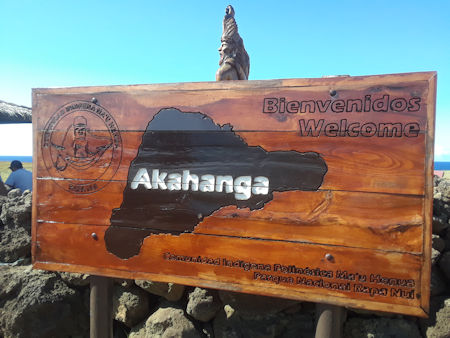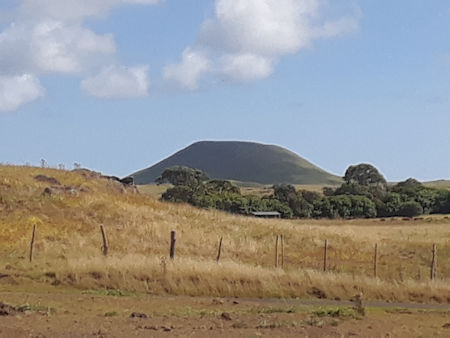Easter
Island(2020)
Even MORE Moai !
Even MORE Moai !
Our
first stop was Ahu Akivi (#4) While all but 30 Moai are located on the coast, Ahu Akivi is located 2.6 km inland Constructed in the 15th-16th centuries, 150 years before European contact, this territory was associated with the Miru clan, one of the most powerful and high ranking tribes on the island |
|
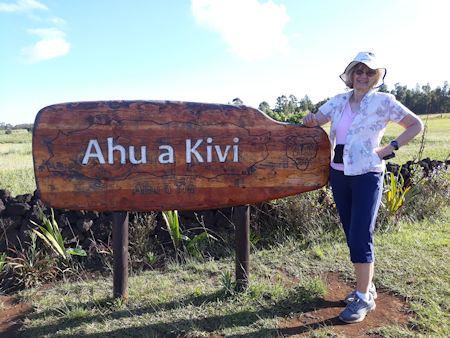 |
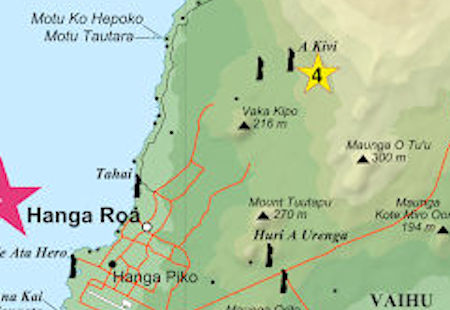 |
Unlike
other Moai sites, these are unusually uniform While they appear to be facing out to sea, in reality they are facing a nearby village & cave dwellings. fulfilling their purpose - to watch over and protect the inhabitants |
|
 |
|
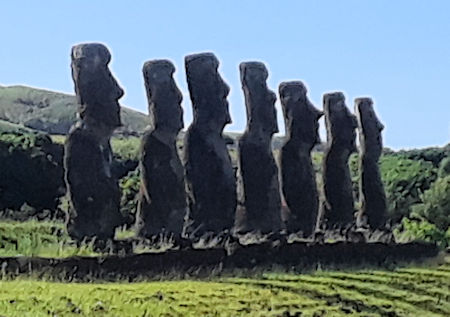 |
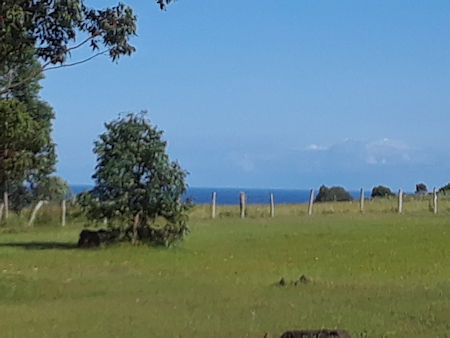 |
Ahu
Akivi was the first ahu to be restored after a small group
of islanders, at the request of Thor Heyerdahl, erected the statue of the Ahu Ature Huki on the beach of Anakena in 1956. The reconstruction work in Ahu Akivi began in March 1960 and continued until October of that year. |
|
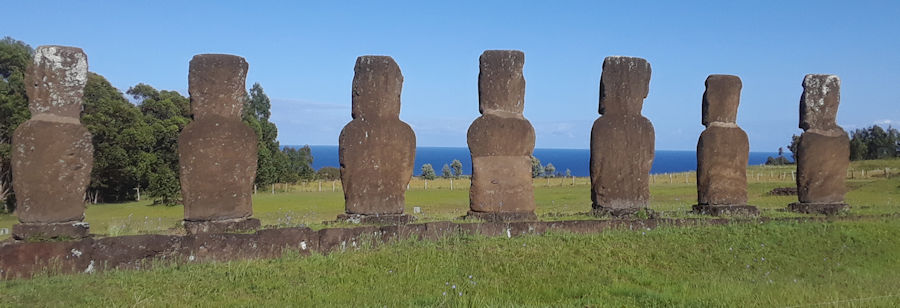 |
|
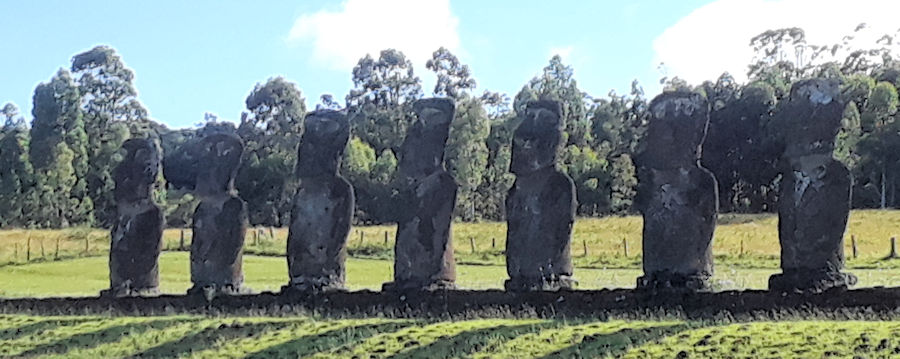 |
|
 |
|
The
restoration of Ahu Akivi is considered a turning point in
Rapa Nui From that moment other platforms began to be restored and regained their former glory This attracted the attention of other researchers and travelers and began a cultural renaissance, economic development and a renewed sense of pride in being Rapanui The annual Tapati Rapa Nui festival which we attended is part of that renaissance |
|
From Ahu Akivi
we proceeded South Finally back
West toward Hanga Roa to |
 |
Puna
a Pau - The Quarry of the Moai "red hats" (Pukao) |
|
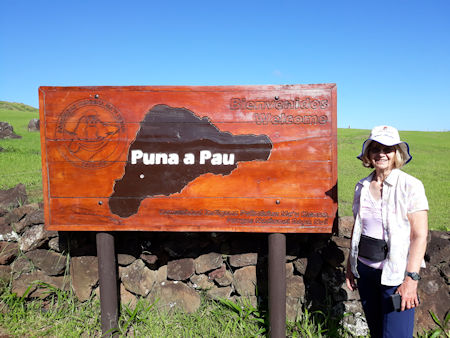 |
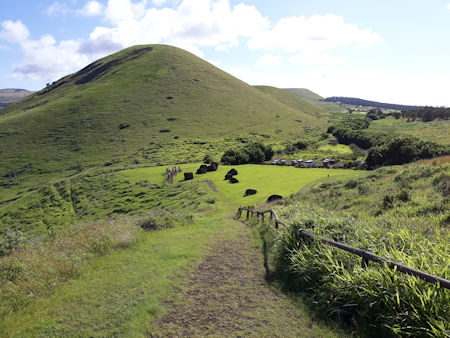 |
Puna
Pau is a small extinct volcano, located about 7 kilometers
northeast of Hanga Roa Currently the crater is just a depression in the land covered with vegetation |
|
 |
|
Only
a few outcrops of the red rock (scoria) are visible on the
southern slope, |
|
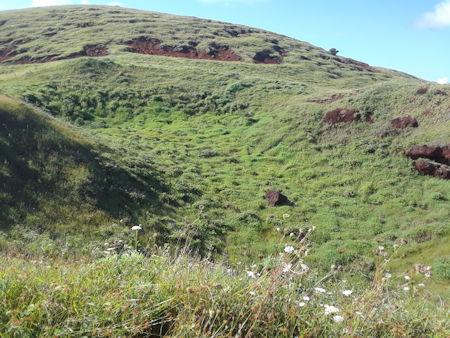 |
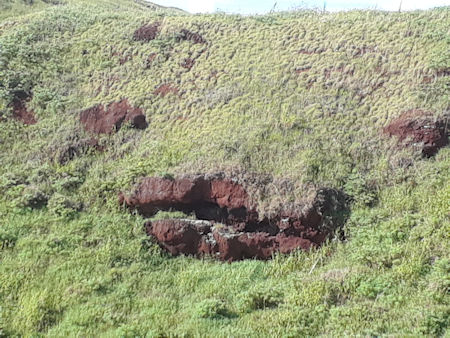 |
 |
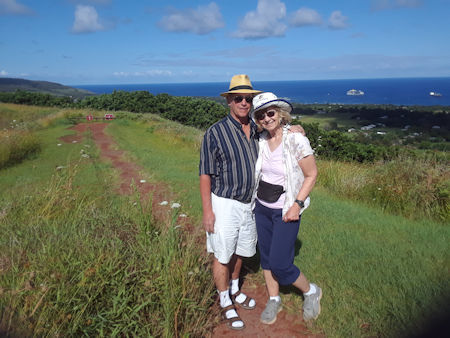 |
It
is strictly forbidden to leave the designated path and touch
the pukao |
|
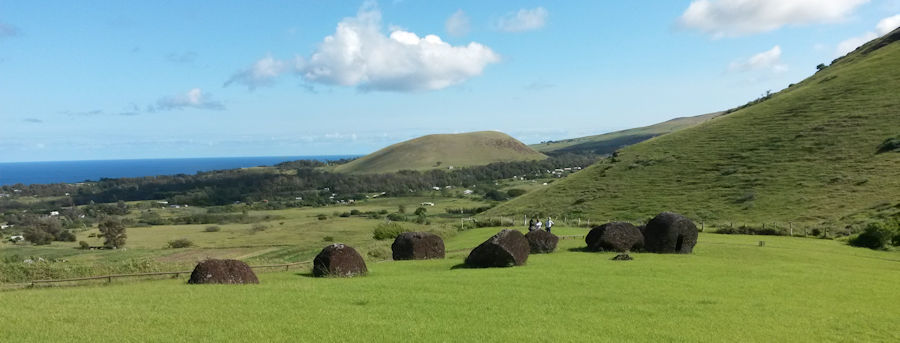 |
|
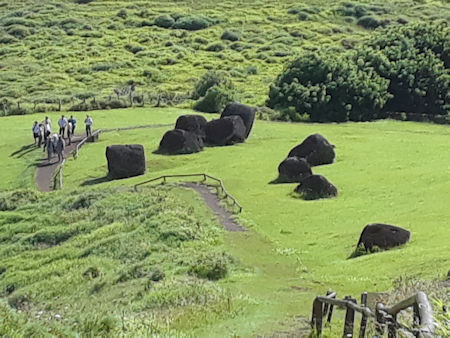 |
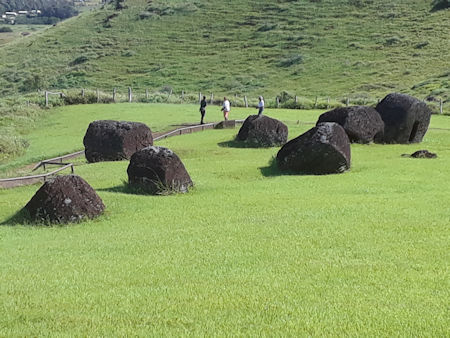 |
Each
Moai and Pukao on the island has an ID number. Here is #35 |
|
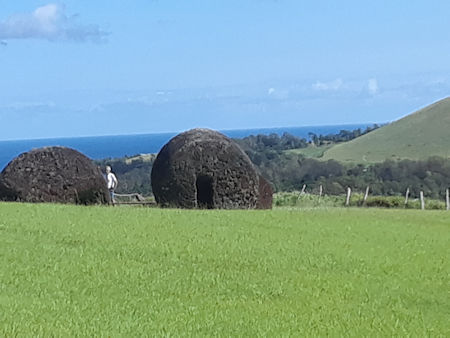 |
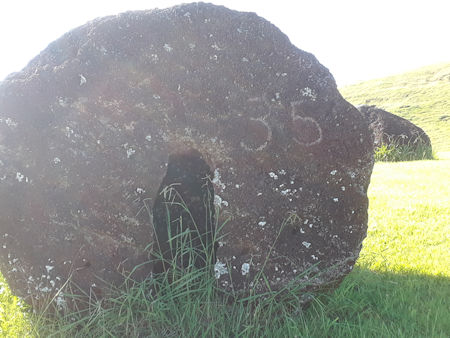 |
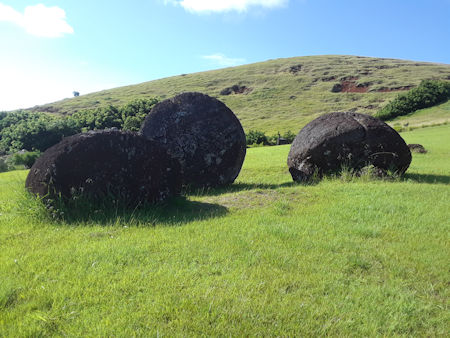 |
 |
Our
next stop was Akahanga and Ahu Ura Uranga Te Mahina In the back of the ahu, there is a crematorium and a rustic ramp to disembark canoes |
|
According
to oral tradition, the first king of the island, the legendary ariki Hotu Matu’a was buried in this place. The excavations carried out have not yet found any vestige of the ancient king. 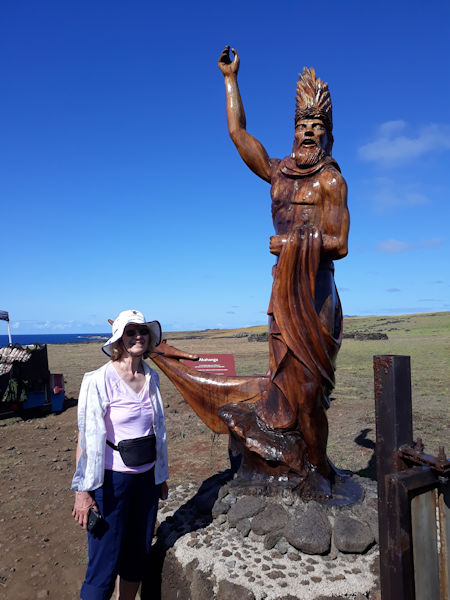 |
|
The
Ahu Akahanga stands in front of the sea, a few meters from
the waves that beat against the rocks. This large platform of 18 meters in length has not been restored, This was state in which all the ahu before restoration began in 1960 |
|
 |
|
The crematorium is on a promontory jutting out toward the sea |
|
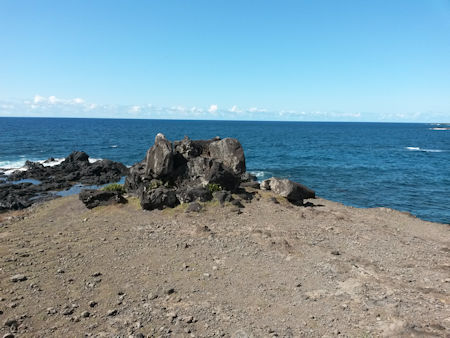 |
-450.jpg) |
 |
|
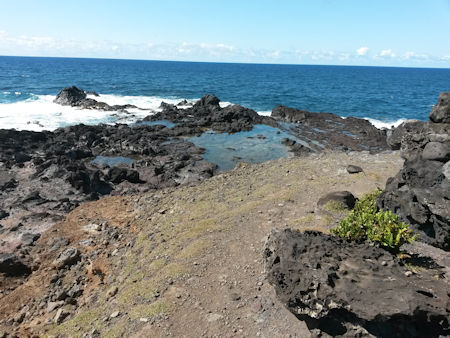 |
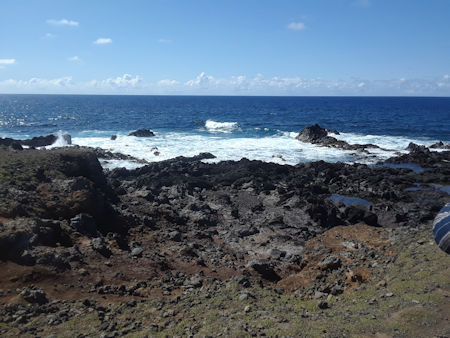 |
 |
 |
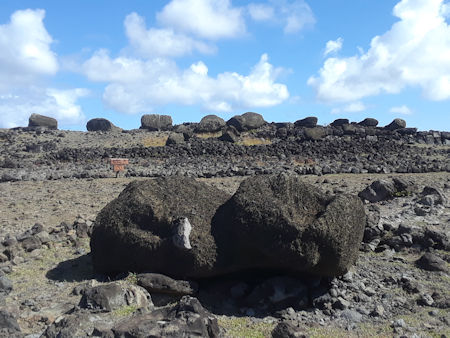 |
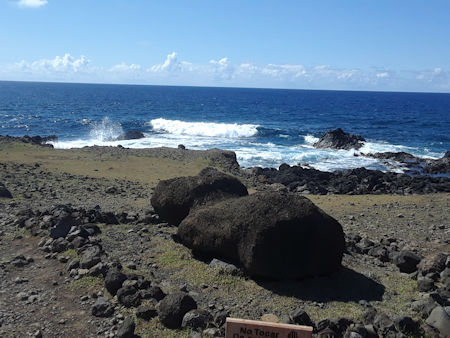 |
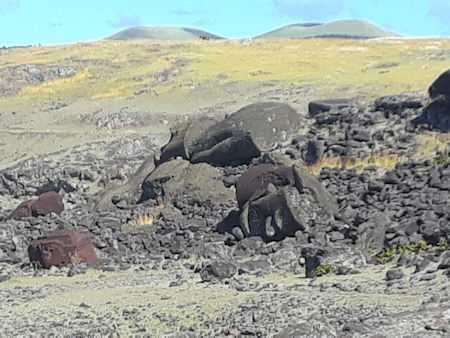 |
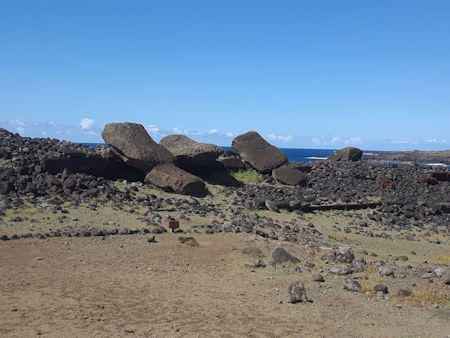 |
 |
|
In
front of the platform, there are several headdresses of
volcanic red scoria (pukao) that topped the statues |
|
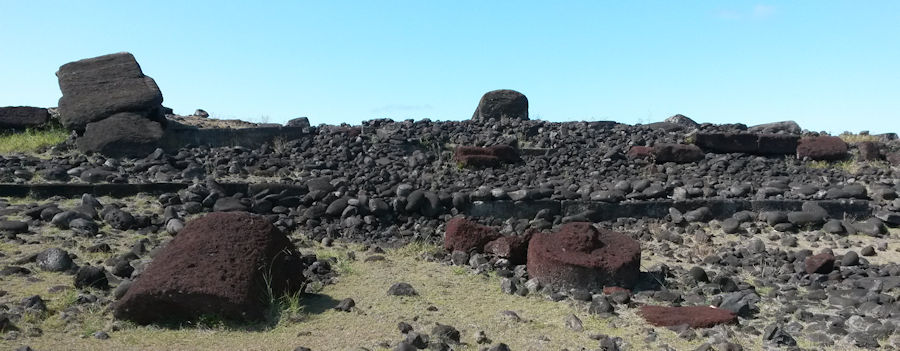 |
|
Note
the petroglyph in the middle of the photo |
|
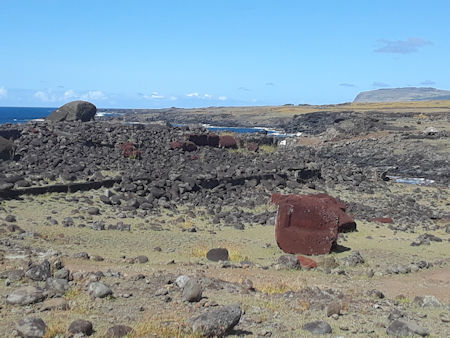 |
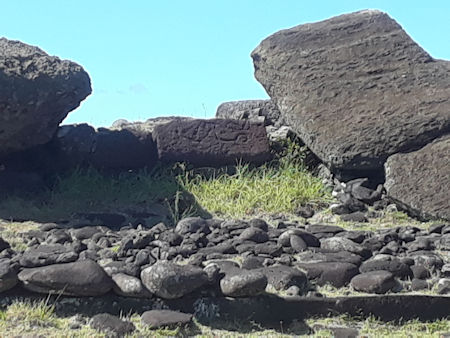 |
A
bird has perched on this fallen Moai |
|
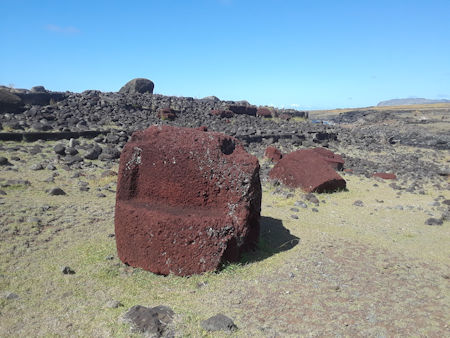 |
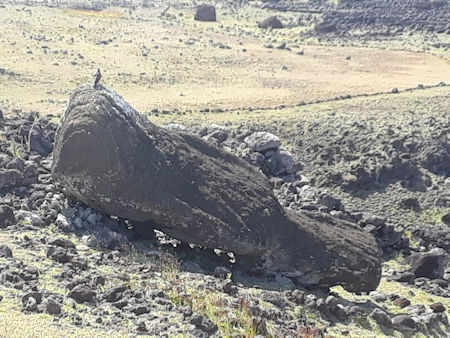 |
A
few steps to the west is Ahu Uru Uranga Te Mahina - a site
hardly ever visited by tourists We went there with our guide because of a 60 Minutes documentary about the threat to the Moai from erosion The informational sign below details the conservation work being done to preserve these icons of history |
|
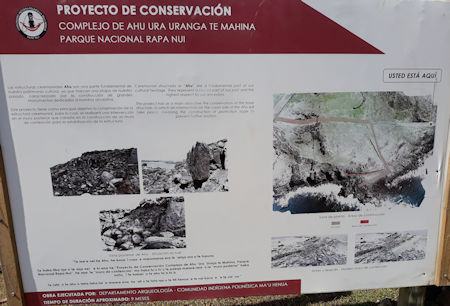 |
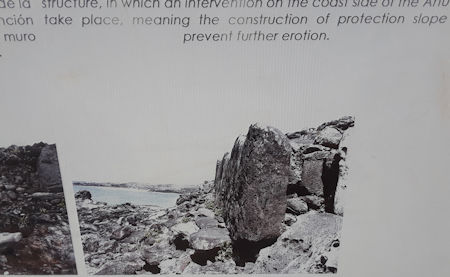 |
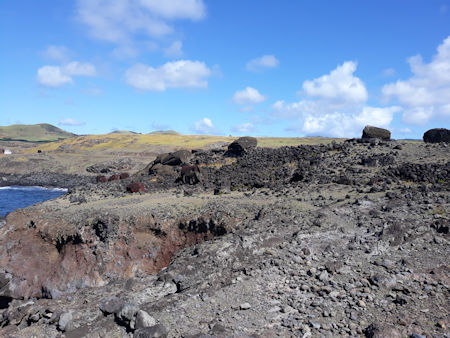 |
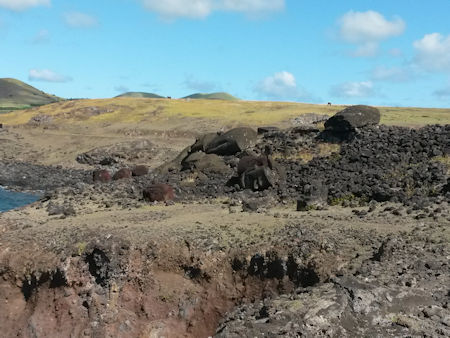 |
On
the right facing the sea, there is a small cave called Ana
Akahanga Legend says it was originally the home of the king's sister The cavity, which is of the karava type due to its width and shallow depth, has been used as a temporary refuge by fishermen, to shelter from the rain or spend the night. |
|
 |
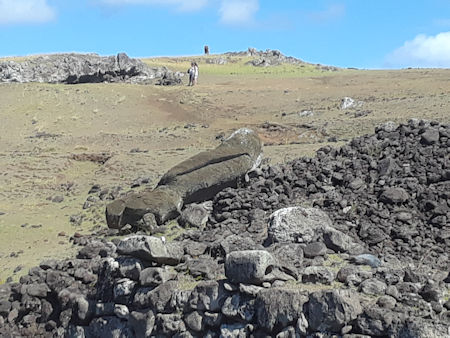 |
 |
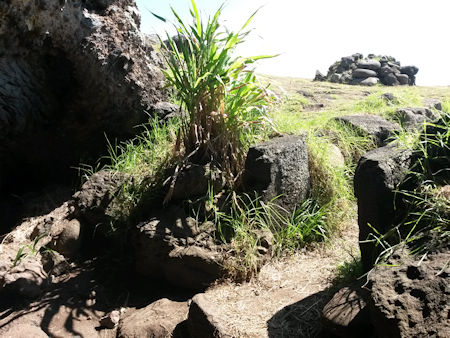 |
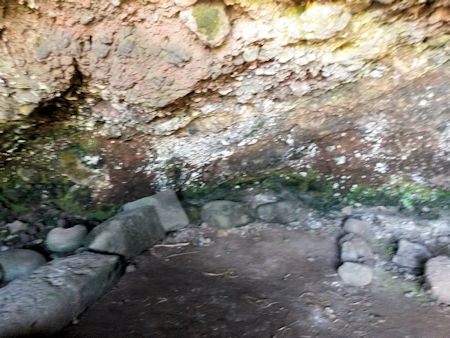 |
 |
Ahu
Vinapu (aka Ahu Tahira) includes an “Inca” style
wall Its similarity to the structures in the fortress of Saysachuaman and in the citadel of Machu Picchu in Peru, suggests the possibility of contact between the ancient inhabitants of Polynesia and South America |
|
 |
 |
The
wall consists of large blocks of stone weighing several tons,
joined without mortar and adjusted with great precision |
|
 |
|
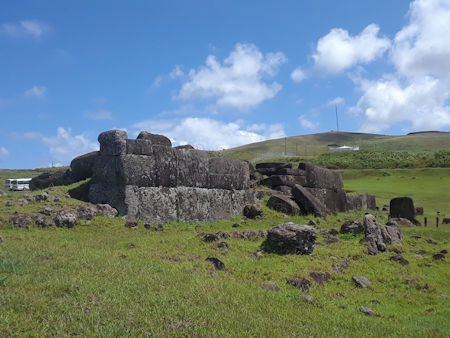 |
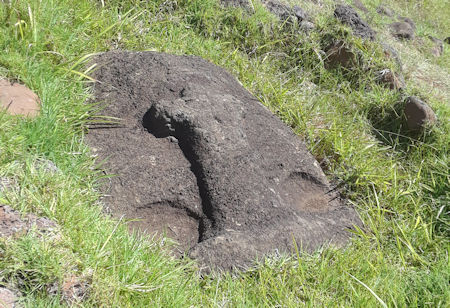 |
Several
pukao are scattered around the area |
|
 |
|
Including
some that have been repurposed to collect rainwater |
|
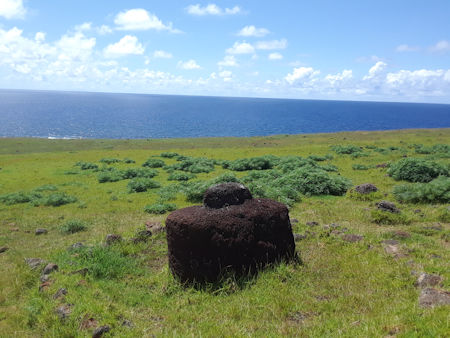 |
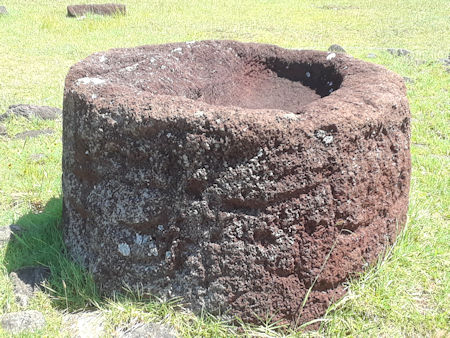 |
The
main attraction of this place is this single red column that
rises It was discovered by the archaeologist William Mulloy during the expedition of Thor Heyerdahl in 1956 It is made of red scoria, the same material of the pukao, and carved in the quarry of the Puna Pau volcano. |
|
According
to some witnesses, this "feminine" or "family" Moai
could orginally have had 2 heads. Sebastian showed us the image at right There is a simiar wooden sculpture depicting the Holy Family in the Catholic Church in Hanga Roa. |
|
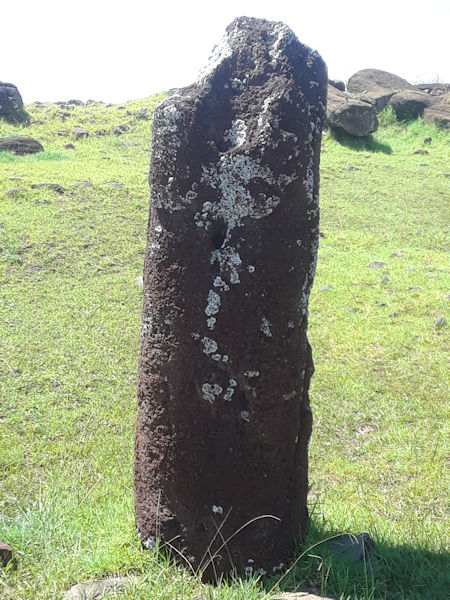 |
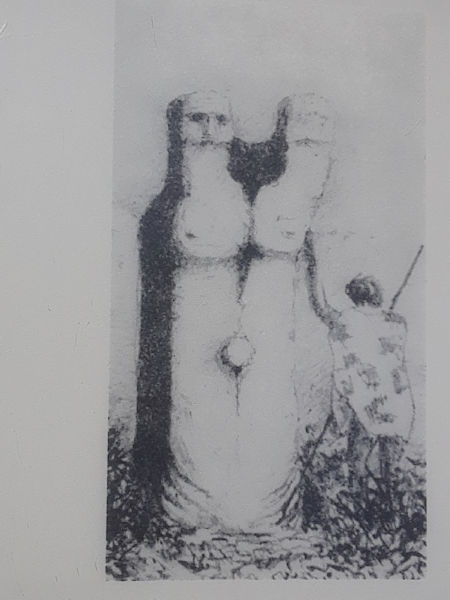 |

